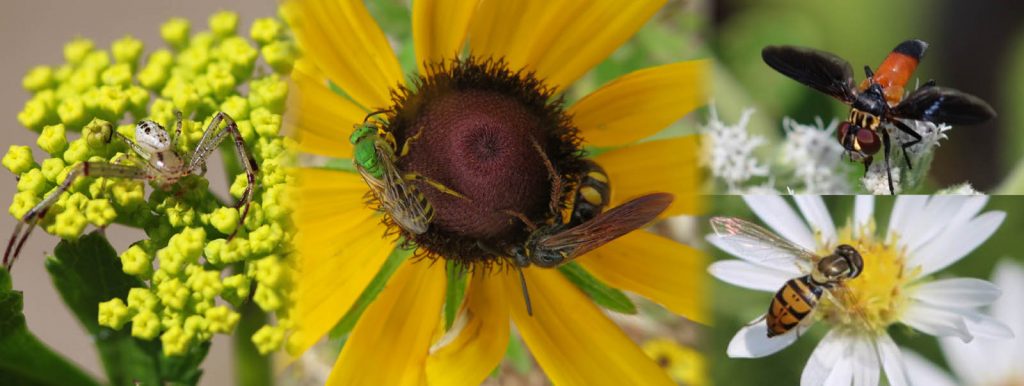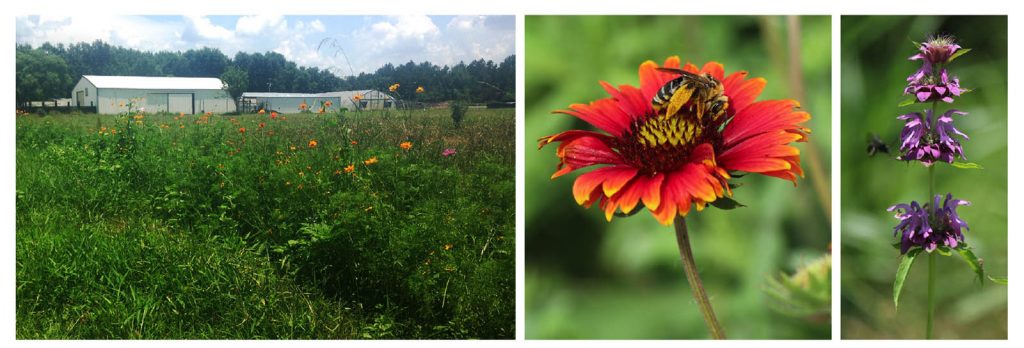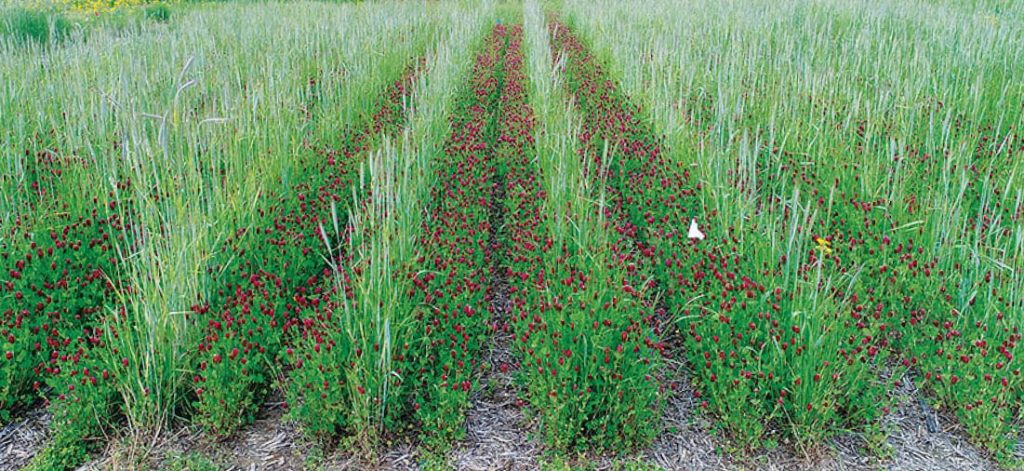
By Jason Schmidt, Carmen Blubaugh and William Snyder
Before large monoculture agriculture became commonplace, farms had a bit of everything — from a vegetable garden and a fruit orchard, to a chicken coop and a honeybee hive, to a natural forest and even a lake or creek. These farms had rich and vibrant plant and animal life, healthy soils and good yields.
In the last 80 years or so, farms have become larger, more uniform in crops, with higher inputs of water, fertilizer and pesticides — all to be able to get high-quality yields, feed a growing population and remain profitable. But another change is happening: our awareness that we need to restore some of that diverse farm life to sustain production.
Biological diversity or biodiversity, the diversity of living things, has gained attention in the last decades due to the great value of many ecosystem services (i.e., natural ecosystem components that benefit humans) such as pollination and natural pest control. Building diverse, healthy and sustainable food production requires more than knowledge of pesticides, nutrients, irrigation and plant germplasm.
Current messaging emphasizes “Protecting the life that sustains us” (the mission of the Xerces Society), and large global research teams are mobilized to evaluate the importance of biodiversity for crop production. A biodiversity-based economy places greater worth on biodiversity than just direct products. Conservation and restoration of landscapes is gathering interest as methods to provision biodiversity and associated ecosystem services.
Could a field full of insects ever be a good thing? Maybe, if you are into “biodiversity-friendly” farming. For each pest, there are likely 1,000 species that are either beneficial or have an unknown role in agriculture. For the most part, having a field full of insects could be a good thing when there are many different types of insects. This is especially good if we see lots of bees, butterflies and predators, and a lot fewer pests damaging plants. Sadly, it is more common to hear about the bad bugs, especially when one species is having a tremendous impact on production.
Generally though, more species provide more functions for a system. With diverse communities, there are many workers to do the necessary tasks (i.e., nutrient cycling, pollination, pest control, etc.) in the system. Having multiple species doing the same type of work can provide a back-up in case a player in the starting lineup goes down and a sub is needed. This is called resistance or ecological resistance.

Building diverse systems with many different species boosts resistance in the farming system because there is less risk to lose key functions like pollination and pest control. For example, growers are currently relying very heavily on one species of pollinator, the honey bee, to do a lot of work. Now that the honey bee is facing new parasites and other challenges, pollination is at risk.
Another attribute of diverse systems is resilience. When things do go wrong or conditions change, diverse systems commonly bounce back quicker. Let’s looks at the steps growers can take to help restore and maintain biodiversity.
STEP 1
Plan for biodiversity during land conversion. Research has revealed that loss of diverse lands is likely one of the big drivers of biodiversity loss. We can tell this by using land cover maps to understand large patterns of habitat change. One clear pattern is that most (if not all) of the high-quality arable land is already in use, and in some areas, there is not much undeveloped land left to expand or we will be farming in wetlands, lakes, rivers or deserts.
Habitat loss has become a strain on biodiversity because plant and animal species simply do not have places to live. Land-use analysis tells us that planning of any new land for conversion should also plan for providing permanent, non-cropping areas for buffering between waterways and other fields. These areas can be wetlands, stream edges, etc. The current rule of thumb, which requires a lot more study, is that 20% of land should be in non-cropping areas such as native forests and diverse wildflowers to buffer areas and provide food and shelter for biodiversity to prosper.
STEP 2
Grow fields with off-season cover crops to provide resources for aboveground and belowground diversity.During winter, when crop vegetation is dormant, habitat may be lacking in very large stretches of farmland. This means that valuable pollinators, parasitoids and predators have nowhere to dwell so they must rebuild their populations from scratch every year. Growing more green material builds a healthy insect and microbial community (which breaks down organic matter, brings nitrogen into the soil and improves soil structure). However, a soil left bare rapidly breaks down last season’s plant roots and releases carbon to the atmosphere instead of storing carbon and nitrogen for the next season. This results in a loss of valuable components of the nutrient cycle.

The good news is that there are some simple, cost-effective ways to retain and build biodiversity aboveground and belowground. Cover crops (either single or mixed species) bring nitrogen and carbon into the soil and hold soil in place to reduce nutrient loss and erosion. They also provide habitat and food for species during times when the major crops are not growing in the field. Cover crops are an inexpensive solution to building soil organic matter, soil structure, and to feeding the invisible biodiversity of microbial (fungi, bacteria and algae) life.
Researchers are just beginning to understand the complexity and dependency of the soil microbial community on cropping systems. Microbial life is incredibly diverse and very small. Biodiversity in soils can reduce vulnerability to extreme weather and to insect and pathogen attack by boosting plant defenses.
Step 3
SNAP to it! An acronym coined by Steve Wratten at Lincoln University in New Zealand is SNAP — provide shelter, nectar, alternative food and pollen. Habitat planning and restoring native habitat to agricultural landscapes can achieve SNAP conservation goals for the future of sustainable food and fiber production and help maintain valuable ecosystem services we depend on. Loss of habitat is a significant driver of biodiversity loss, so habitat management will help restore and sustain biodiversity in agricultural landscapes.
So, what can we do? Practice integrated pest management and use pesticides only when there is evidence that they are needed (i.e., if scouting has shown the number of pests is over a harmful threshold). Practice crop rotation, diversify production with multiple crops, maintain permanent plantings of flowering plants in marginal areas of the field, and improve forest edges and buffers between agricultural land and waterways.
Let’s SNAP our farms into rich, biodiverse lands to stimulate natural regulation of our food and fiber production ecosystems and to further agroecosystem tourism.
Jason Schmidt is an associate professor, Carmen Blubaugh is an assistant professor, and William Snyder is a professor — all at the University of Georgia.









